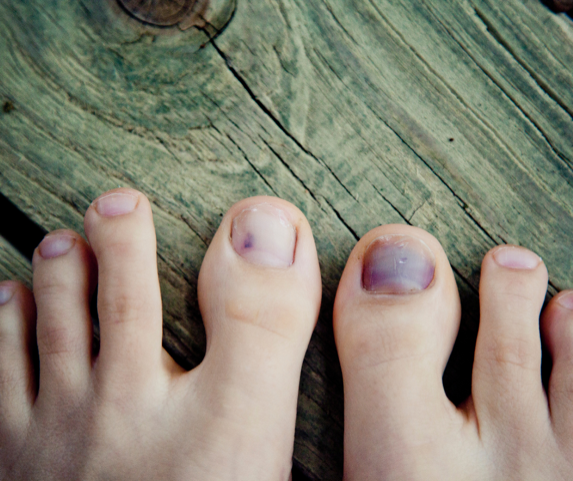How to Avoid Getting Black Toenails

Long-distance running can be incredibly rewarding, but it also comes with its fair share of challenges. One common issue that many runners face, especially when they increase their mileage, is the dreaded black toenail. Black toenails are not only unsightly but can also be painful and indicate underlying issues with your running shoes, form, or training regimen. In this blog, we’ll explore the causes of black toenails and provide you with practical tips on how to avoid them during your long runs.
Primary Causes:
- Poorly Fitted Shoes: Running shoes that are too tight or too loose can lead to toenail damage. Tight shoes put pressure on your toes, while loose ones allow your feet to slide forward, increasing friction.
- Toe Impact: The repeated impact of your toes against the front of your shoes can lead to trauma and damage to the toenails, especially during long runs.
- Improper Toenail Maintenance: Neglecting your toenails, such as letting them grow too long or not trimming them correctly, can increase the risk of black toenails.
- Running Downhill: Descending hills can cause your toes to repeatedly hit the front of your shoes, increasing the risk of toenail damage.
Prevention Tips
- Properly Fitted Shoes: Visit a specialty running store: Get professionally fitted for running shoes by experts who can help you find the perfect size and type for your feet.
- Measure your feet: Regularly measure your feet as shoe size can change over time. Ensure you have enough space in the toe box to prevent crowding.
- Nail Care: Keep your toenails trimmed: Trim your toenails straight across, leaving a bit of white nail to protect the skin underneath.
- Avoid cutting them too short: Cutting your toenails too short can lead to discomfort and increased vulnerability to injury.
- Moisture-Wicking Socks: Choose moisture-wicking socks that help reduce friction and keep your feet dry during long runs. Avoid cotton socks, as they tend to retain moisture.
- Lace Adjustment: Experiment with different lacing techniques to secure your feet comfortably within your shoes. This can prevent them from sliding forward and causing trauma to your toenails.
- Toe Protectors: Consider using toe protectors or gel caps, which can be placed over your toenails to provide an extra layer of cushioning and protection.
- Proper Running Form: Pay attention to your running form, especially when descending hills. Try to avoid excessive toe striking and focus on a mid-foot or forefoot strike.
- Gradual Progression: Don’t increase your mileage too quickly. Gradually build up your running distance to allow your feet to adapt to the stresses of longer runs.
- Monitor Your Shoes: Keep an eye on the wear and tear of your running shoes. Replace them when they start to lose their cushioning and support, as worn-out shoes can contribute to toenail damage.
Black toenails are a common nuisance for long-distance runners, but with the right precautions and adjustments, you can minimize the risk of experiencing this issue. Properly fitted shoes, diligent toenail care, moisture-wicking socks, and good running form are all essential factors in preventing black toenails. Happy running!






















